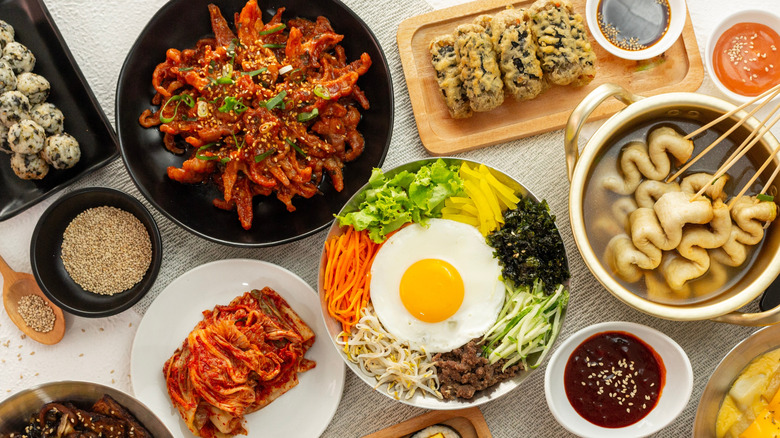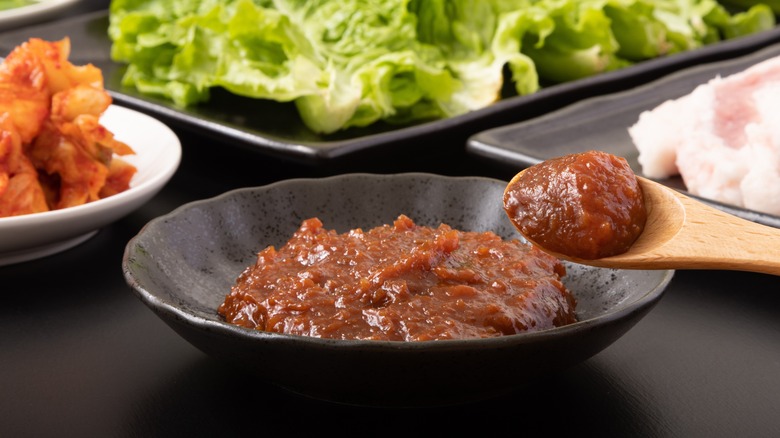The 2 Green Flags You Should Look For At Korean Restaurants
With Korean food's rising popularity and bustling Koreatowns in cities like New York City and LA, there are so many eateries to explore. One of the absolute best Korean BBQ restaurants in the U.S. might even be in your neck of the woods. We talked to an expert about which green flags in Korean restaurants distinguish the good from the even better. Sungchul Shim is a chef at the Michelin-starred Korean restaurant, Kochi. It debuted in the Hell's Kitchen neighborhood of the Big Apple in 2019 and offers a nine-course tasting menu that combines street food and traditional flavors. Fittingly, the restaurant's name translates to "skewer," a tool used for many Korean street foods such as rice cakes, chicken, and fish cakes.
The two green flags that Shim told us to look out for are restaurants that use house-made kimchi and sauces. Restaurants could so easily order these items in bulk, but choosing to make them is "always a great sign of a restaurant using fresh ingredients and attention to quality," Shim explained.
The chef also told us about the red flags to look out for: "Avoid any Korean restaurant where you see greasy bowls or plates as it is a sign of improper maintenance and care and could possibly lead to food-borne illnesses." This advice applies to eating at any restaurant, and if you notice dirt or grease on a plate, you should alert the waiters.
House-made is all-around better
So, how do you know if the Korean restaurant you're visiting has house-made kimchi? Well, taste alone might be able to tell you. House-made kimchi might have more crunch to it and a better balance of sour and fresh flavors. Even though kimchi is not an innately fresh food — it's fermented, after all — making it on the premises allows the restaurant to control the levels of fermentation. A more obvious sign would be witnessing the chefs preparing it, which often entails huge bowls filled with cabbage and gloved hands mixing in bright red pepper paste. The most direct way to know if kimchi is house-made, however, is to just ask the restaurant.
House-made sauces are a next-level labor of love. Staples like gochujang (a chili paste) and doenjang (a soybean paste) are fermented pastes that show up in many Korean foods. They are also used to make other sauces. For example, ssamjang is a dipping sauce made with gochujang and doenjang (don't make the Korean BBQ mistake of skipping ssamjang in your lettuce wraps). Yangyeom sauce is a sweet and spicy gochujang glaze that often coats fried chicken. When made with fresher ingredients, they will likely have a better flavor.
However, if you don't find green flags when visiting a restaurant, all is not lost. You can try your hand at creating kimchi and sauces from scratch to make homemade Korean food taste restaurant quality.

